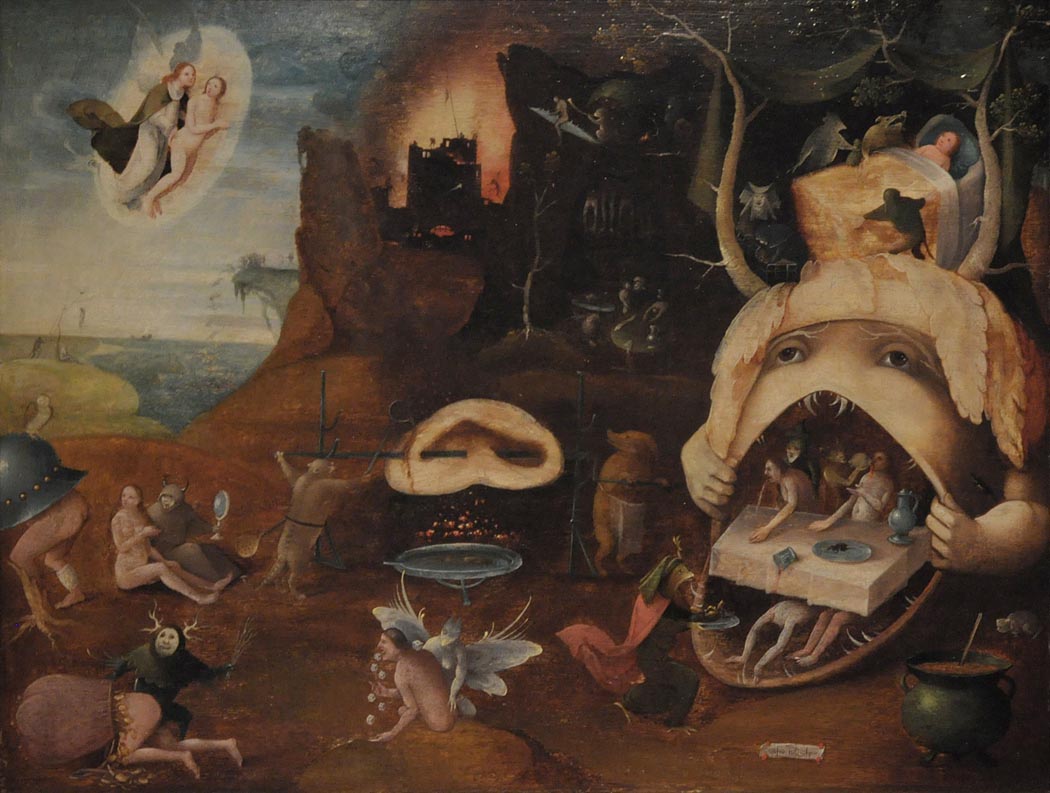
• Highly rendered depictions of other-worldly scenes, characters, creatures, and/or objects
Convincingly depicted imaginary scenes can create an experience for the viewer that is fully immersive, with the illusion placing the viewer deeply within the imagined world. There is little or no reference back to the hand of the artist, as mark making is hidden or minimized through careful rendering, so the artist might be temporarily forgotten as we enter into and explore the characters, objects, and terrain of this alternate universe.
The level of dedication required to invent and render such a scene might require a degree of obsession, and this obsessive quality can be a compelling aspect of such a work of art. A sense of awe can be generated as the viewer occasionally recalls that this immersive, otherworldly experience was created through the sustained imagination of an individual.
An artist might use everything he or she has learned from the depiction of real life in order to build volumes, textures, and lighting in a new surreal scene. Or, the artist might choose to introduce new rules for the way light and surfaces behave in this other world.
Surreal/fantastic imagery might be inspired by dreams, daydreams, hallucinations, visions, or an active imagination. Artists might find inspiration by looking at random patterns and shapes found in such things as rock formations, ink blots, or walls with multiple crumbling layers to imagine an otherworldly scene.
Featured: The Vision of Tondalys by a follower of Hieronymus Bosch.